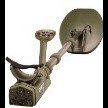Testing The New AQ
-
Similar Content
-
- 3 replies
- 478 views
-
- 61 replies
- 5,006 views
-
- 28 replies
- 2,461 views
-
- 58 replies
- 25,014 views
-
- 10 replies
- 4,963 views
-
- 10 replies
- 4,458 views
-
-

.thumb.jpg.d71314a45f3dc82bf75ac1b96e7e9201.jpg)








Recommended Posts
Create an account or sign in to comment
You need to be a member in order to leave a comment
Create an account
Sign up for a new account in our community. It's easy!
Register a new accountSign in
Already have an account? Sign in here.
Sign In Now